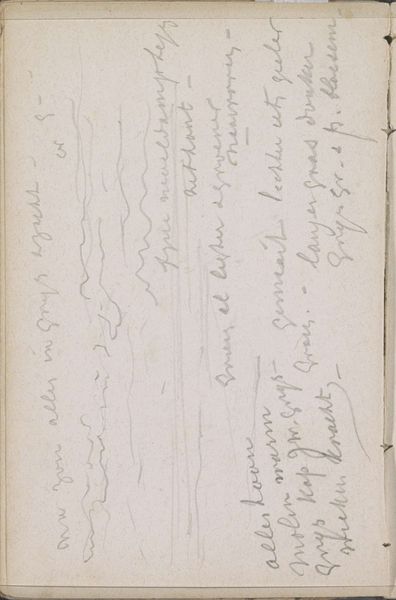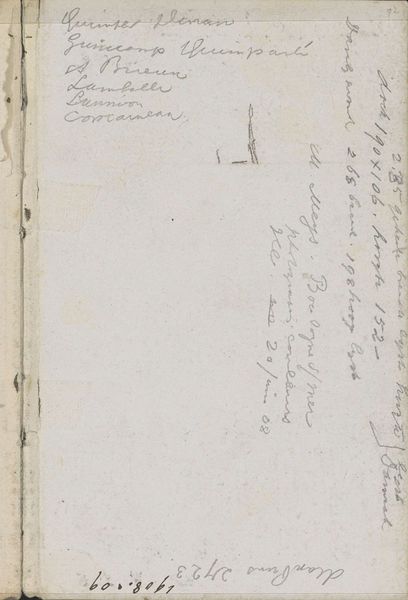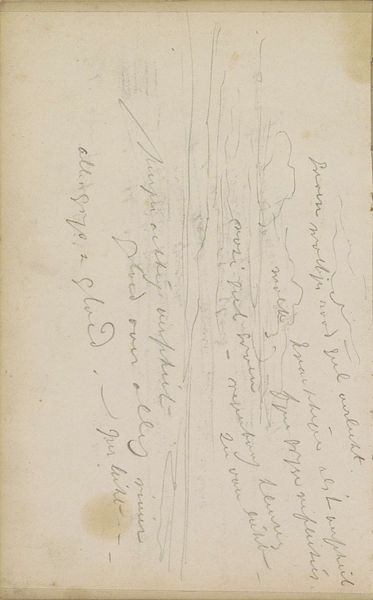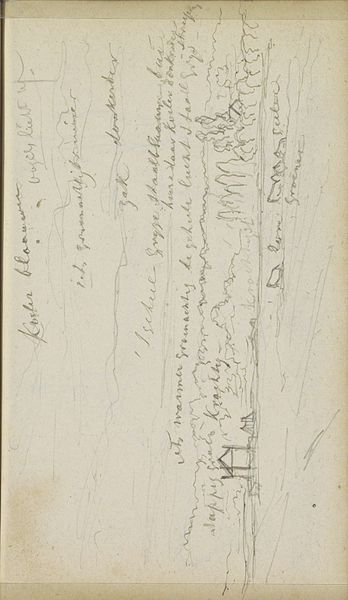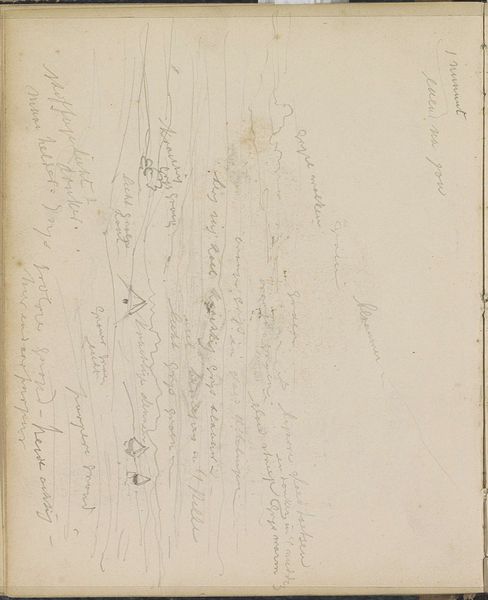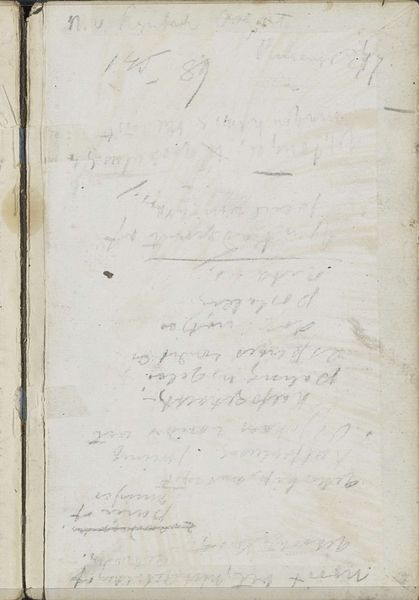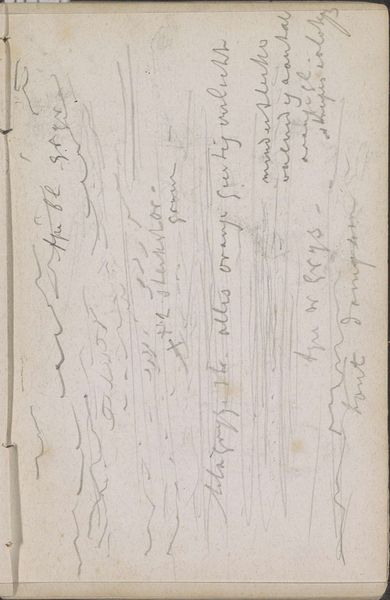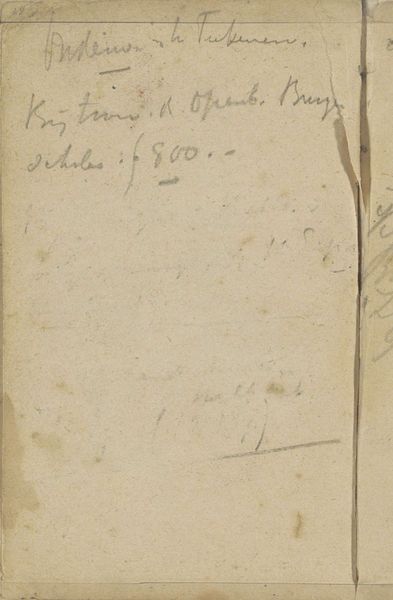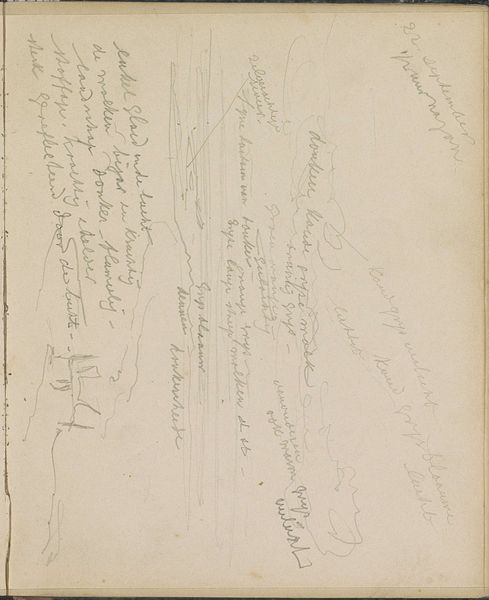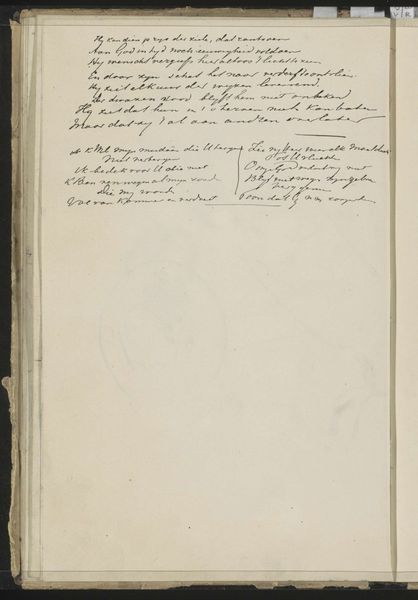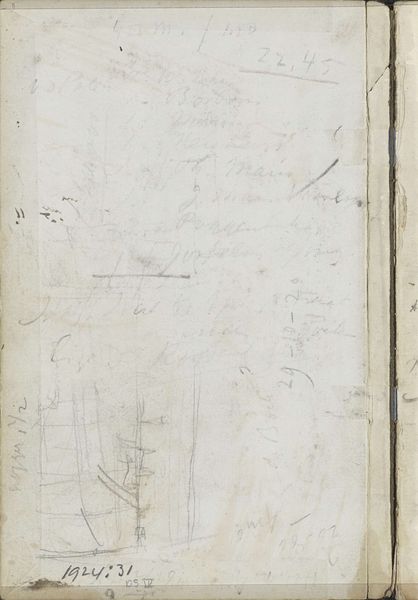
drawing, paper, pencil
#
drawing
#
landscape
#
figuration
#
paper
#
pencil
#
line
#
watercolor
#
realism
Copyright: Rijks Museum: Open Domain
Editor: So, this is "Flat Landscape with a Figure," a pencil drawing on paper by Johannes Tavenraat, created sometime between 1839 and 1872. It has this ghostly, ethereal quality... almost like a half-remembered dream. What social undercurrents do you perceive? Curator: The near monochromatic style and figure's isolation invite considerations of how individuals perceive their relationship to the vastness of nature and, by extension, to society itself. How does this image reflect the sociopolitical circumstances during the time of its creation, and do you believe that it advocates the situation in society at this time? Editor: It's tough to say definitively, but the lone figure suggests vulnerability and perhaps even marginalization. Was Tavenraat subtly commenting on the rise of industrialization and its impact on the individual? Curator: That is possible, or is he depicting the rise of the individual, empowered by philosophical concepts such as Existentialism? How does this contrast to other contemporary representations of the Dutch landscape that often highlighted its agricultural abundance and its link to nationalist narratives? The landscape could represent more than geography, perhaps political aspirations of the time. What do you think? Editor: I see your point. Maybe the emptiness isn't just a comment on industrial isolation, but a reflection on the search for individual meaning. It's interesting how much you can unpack from such a simple drawing! Curator: Indeed, that's why looking at these landscapes critically matters. They aren’t just passive records. They actively engage with—and shape—our understanding of self and society. I wonder if its title, specifically calling out 'flatness', makes a feminist reading possible, highlighting an intentional lack of depth and a celebration of surface. What implications do you see regarding art's responsibility as an activist endeavor? Editor: I never considered it from that perspective before! This opens a lot more ways to think about the artist's choices and intentions. I’m glad we dug deeper. Curator: Agreed. It shows us how much context shapes our interpretations and enriches the narrative that the art is trying to convey.
Comments
No comments
Be the first to comment and join the conversation on the ultimate creative platform.
